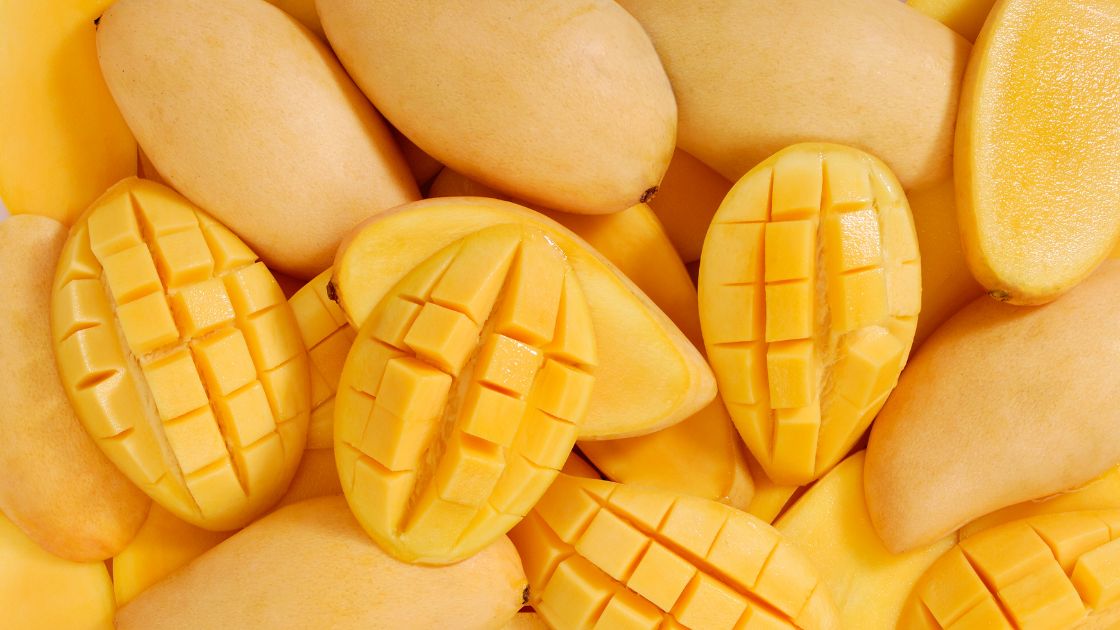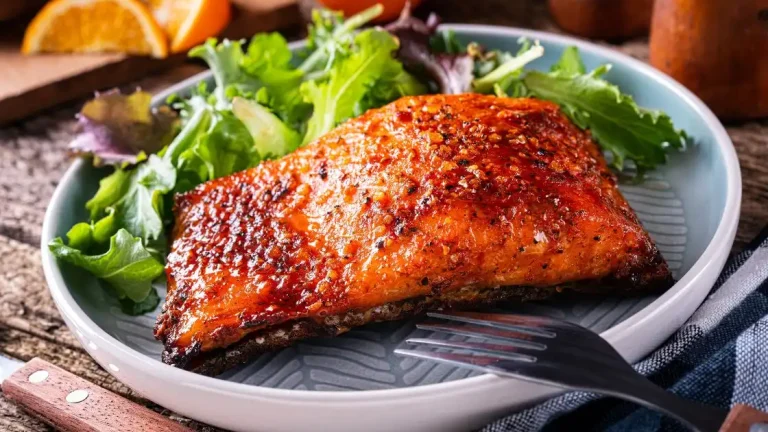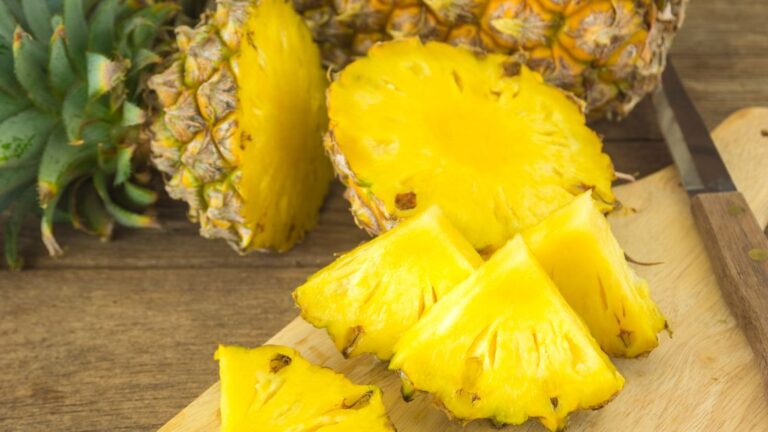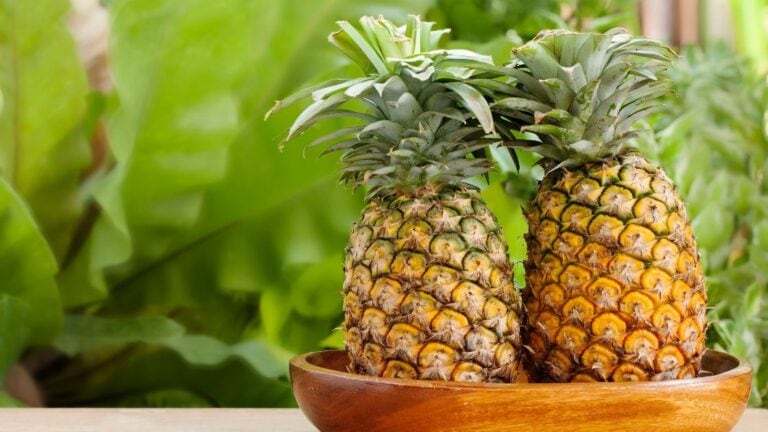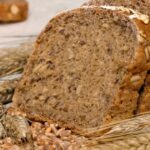Mangoes ripe are a bountiful source of polyphenols within easy reach of everyone.
Due to their antioxidant properties, polyphenols help in the battle against free radicals. That is why this wonderful fruit offers us protection against degenerative diseases.
Thanks to their abundance of these antioxidant substances, mangoes ripe offer numerous positive effects and advantages for our bodies.
Read on and find out the story behind mangoes and how their consumption can impact our health.
Physical description
A mango tree can grow to a height of 50 to 60 feet (15 to 18 meters) and can live a long time. Its leaves are simple and lance-shaped that can grow up to 30 cm (12 in) long.
The large terminal panicles bear minute, pink, fragrant flowers. Some flowers only contain stamens, while others also have pistils.
Concerning its shape, it varies widely. Its shape can be round, oval, heart-shaped, kidney-shaped, or long and thin.
The smallest mangoes are only slightly larger than plums, while others can weigh between 1.8 and 2.3 kg. While some species have drab green leaves, others have bright red and yellow hues.
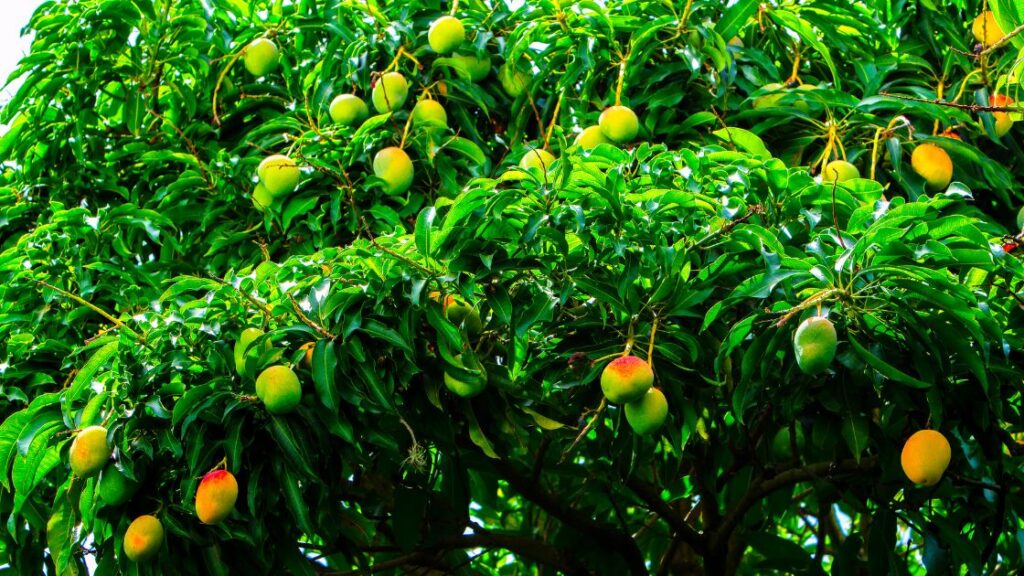
When mango is ripe it is usually yellow to orange in color, is very juicy, and has a characteristic sweet and spicy flavor. It has a single, huge seed that is covered all over the fruit.
Unripe mango is green in color, hard in consistency, and quite acid in flavor. Even though unripe mangos have a very sour taste, some people love green mangoes.
Ripen a mango can take some time on the tree. If they fall from the tree before they are ripe, they will ripen on their own over time.
Mango does not require a specific type of soil to grow. But the finest types are those that produce good crops. Normally these soils are found in areas with dry seasons that favor fruit production.
History and production
Indian folklore and religious rituals are closely linked to the mango. Buddha was given a mango grove so that he could relax in its graceful shade.
The Portuguese renamed this fruit Manga when they arrived in Kerala in 1498 for the spice trade. This is likely the origin of the term mango, by which the fruit is known in English and Spanish-speaking nations.
Its tree was not brought to the Western Hemisphere until before 1700 when it was planted in Brazil. It reached the West Indies around 1740, probably because of the difficulty of shipping seeds.
India is the largest mango-producing nation in the world, producing around 50% of all mangoes.
Other major mango-producing nations include China, Thailand, Mexico, Pakistan, the Philippines, Indonesia, Brazil, Nigeria, and Egypt. India contributes more than 52% of world production, or 12 million tons, compared to world production of 23 million tons.
Averaging 22 million metric tons annually, global mango production has been seen to be on the rise. Asia accounts for 75% of world production, followed by South and North America, which together account for approximately 10%.
Its worldwide production has increased due to the important nutrients and health benefits that mango provides. Keep reading and find out what they are.
Nutrients of Mangoes ripe

Mango is a favorite among many people, not only for its deliciousness but also for its high nutritional value.
165 grams of fresh mango in one cup offers:
- 99 Calories
- 24.7 grams of Carbs
- 1.4 grams of Protein
- 2.6 grams of Fiber
- 0.6 grams of Fat
- 20% of the Daily Value (DV) of Copper
- 22.5 grams of Sugar
- 67% of the DV of Vitamin C
- 12% of the DV of Vitamin B6
- 18% of the DV of Folate
- 10% of the DV of Vitamin E
- 10% of the DV of Vitamin A
- 7% of the DV of Niacin
- 6% of the DV of Vitamin K
- 5% of the DV of Riboflavin
- 6% of the DV of Potassium
- 4% of the DV of Thiamine
- 4% of the DV of Magnesium
The most amazing nutrition fact is that just 1 cup of mangoes ripe provides 67% of the DV for vitamin C. This water-soluble vitamin supports cell growth and repair, supports the immune system, and aids in the body’s absorption of iron.
Mangoes have minerals such as copper and folic acid that are crucial nutrients for pregnant women. They help healthy fetal growth and development. These minerals are also abundant in ripe mangoes.
The powerful nutrients that mango provides make it a favorite fruit for many. Such is the case of Rose Macaulay who says:
“When I have eaten mangoes, I have felt like Eve.”
Mangoes ripe health benefits
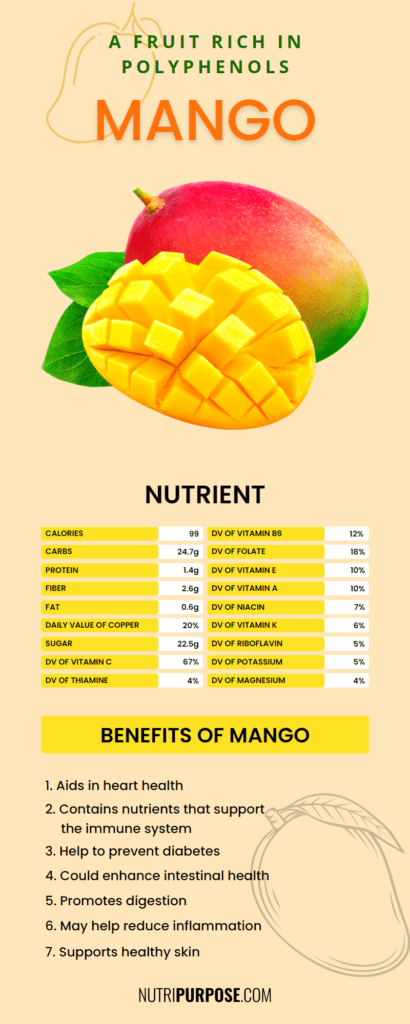
Copy this code and place on your website:
<a href="https://nutripurpose.com/mangoes-ripe/"><img style="width:100%;" src="https://nutripurpose.com/wp-content/uploads/2023/02/Mango.png"></a><br>Read More <a href="https://nutripurpose.com/mangoes-ripe/">Mangoes</a>Aids in heart health
Mangos have nutrients that help maintain a healthy heart.
It contains magnesium and potassium, both of which support healthy blood flow. These nutrients support lower blood pressure by relaxing your blood vessels.
The strong antioxidant found in mangos, mangiferin, may also be beneficial for heart health.
Mangiferin may shield heart cells from oxidative stress, inflammation, and cell death, according to animal research.
Additionally, it might aid in reducing the levels of cholesterol, triglycerides, and free fatty acids in your blood.
Although these results are encouraging, there is still a dearth of studies on mangiferin and human heart health. Therefore, additional research is required.
Contains nutrients that support the immune system
Mango ripe has numerous nutrients that contribute to immune strengthening.
10% of the daily requirement of vitamin A is covered with just one cup (165 grams) of mango.
A healthy immune system requires vitamin A. The risk of infection increases when this vitamin is not consumed enough.
1 cup (165 grams) of mangoes contains about 75 percent of your daily requirement for vitamin C. This vitamin can stimulate the production of infection-fighting white blood cells, make them work better, and strengthen the skin’s defenses.
Additionally, mango has additional nutrients that may help with immunity, such as:
- B complex vitamins
- Folate
- Cooper
- Vitamin E
Help to prevent diabetes
Ripe mangoes are relatively high in natural sugar compared to other fresh fruits. They have 22 grams of natural sugar per cup.
If you have a metabolic condition such as diabetes, you can assume this could be a concern.
Eating ripe mangoes, however, does not appear to cause diabetes or be harmful to those already suffering from the disease.
A higher intake of fresh fruit has been associated in numerous studies with a lower overall risk of diabetes.
According to one study completed in 12 weeks, blood sugar levels improved in people who consumed mango daily. People ate 10 grams of freeze-dried mangoes every day.
Another recent study found that eating foods rich in vitamin C and carotenoids may help delay the onset of diabetes. As a food rich in these two nutrients, mangoes may have similar benefits.
However, eating too much mango is not recommended. It could cause an increase in blood sugar levels due to its high natural sugar content.
In conclusion, it is recommended to eat mango in moderation, that is, a typical serving of 1 cup (165 grams). To reduce blood sugar spikes, it may also be beneficial to combine it with other foods high in protein and fiber.
Spinach, broccoli, banana, and asparagus are perfect to include in a diet that provides a good source of fiber and protein.
Could enhance intestinal health
Mango is very good for digestive health due to several of its attributes. It has amylases, a class of digestive enzymes essential in the digestion process.
Digestive enzymes break down large molecules in food so they are more easily absorbed by your body.
Amylases convert maltose and glucose from complex carbohydrates. Ripe mangoes are sweeter than unripe ones because they have these more active enzymes.
Mango can also help in treating digestive problems like constipation and diarrhea because it is high in water and dietary fiber.
In a 4-week study of people with chronic constipation, daily consumption of mango was found to be very helpful. It helped reduce symptoms as does supplementation with lots of soluble fiber.
This implies that in addition to dietary fiber, mangoes may contain other nutrients that promote digestive health.
Are you ready to eat ripe mangoes?
Surely after knowing all these benefits of ripe mango you are eager to include it in your diet.
The truth is an excellent idea so here are some alternatives for you to eat whenever you want.
Ripe Mangoes Recipes: Easy Ways to Enjoy Them
Mango Milkshake

Time of preparation: 5 minutes
Serves: 2
Ingredients:
- 2 cups of milk
- 2 ripen mangoes (any mango varieties)
- 2 1/2 tablespoons of sugar
- 5 ice in cubes
Procedure:
- Mangoes must be washed and dried well. Chop them after peeling them.
- Add the chopped ripe mangoes to the blender along with the milk and ice cubes. I blended until thick.
- If the shake seems too thick after checking the consistency, add additional milk and blend again.
- Immediately serve the mango smoothie in 2 crystal glasses.
Tea of Mango Ripe
Preparation time: 10 minutes
Serves: 3
Ingredients
- 2 ripe mangoes
- 4 cups of water
- 3 1/2 teaspoons black tea powder
- Sugar as required
- 1 lemon juice
- 4 mint leaves
Procedure:
- The mangoes are peeled and chopped. Use a blender to do a smooth paste with them. Then chill the mango puree while you prepare the tea.
- On a stove or in a microwave, bring the water to a boil, add black tea leaves, and mix by stirring.
- Steep the tea in the hot water for 3-4 minutes, or longer if you like your tea stronger.
- Use a tea strainer to remove the leaves, use a plate or container for this. Brewed black tea should be covered and kept cold in the fridge.
- Take the tea out of the fridge once it has cooled.
- In a blender mix the tea, and the mango pulp, and add the sugar as needed and the lemon juice. Before adding sugar, consider how sweet the mangoes are. The mixture should be smooth.
- Pour mango iced tea into tall glasses over ice. Serve immediately covered with mint leaves.
- You can place mango slices or lemon wedges as a garnish if you like.
Mango Ripe Salad

Preparation time: 15 minutes
Serves: 5
Ingredients
- 1/2 cup of onions (finely chopped)
- 1 cup of mango ripe cubes
- 3/4 teaspoon of roasted cumin powder
- 3/4 teaspoon of paprika or red chili powder
- 2 tablespoons of mint leaves
- Sugar and salt as required
Preparation
- After washing the mangoes, dry them with a clean kitchen towel.
- The mangoes are peeled and cut into small pieces.
- In a mixing bowl or large plate, add the chopped mangoes and finely chopped onions.
- Add sugar, salt, and red chili or paprika powder along with the roasted and ground cumin powder. Using a spoon, combine everything thoroughly.
- For 10 to 12 minutes, cover the mixture and let it rest.
- After a while, the salad will start to lose moisture.
- Serve the mango salad as a side dish.
- You can add some chopped mint or coriander to decorate.
I love ripe mango, its flavor, sweetness, and juiciness. Oprah Winfrey also loves it:
“I was happy over little things: mango sorbet, and running, and the way my feet felt touching the ground when I ran.”
Mangoes Ripe Ready To Eat
The sweetness and flavor that ripe mangoes will leave on your palate are sensational. You will love their taste and all the nutrients they have to offer. Don’t stop including it in your eating plan, your body will thank you.
Description for this block. Use this space for describing your block. Any text will do. Description for this block. You can use this space for describing your block.
